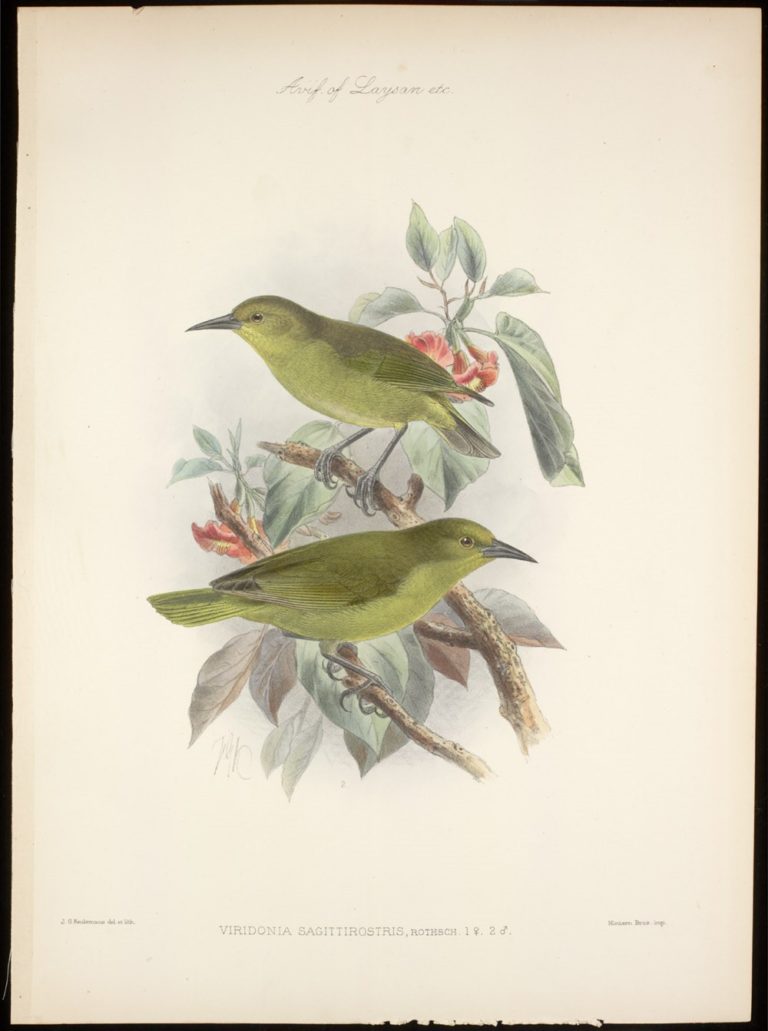Birdfinding.info ⇒ The Greater Amakihi is known only from the Wailuku River Valley west of Hilo. It was first collected on April 23, 1892 and last recorded in 1901 or 1902. During that decade of known existence it was apparently locally common, with up to twelve being seen in a day of field work, and at least 32 specimens collected overall.
Greater Amakihi †
Viridonia sagittirostris
Extinct. Formerly endemic to the Big Island of Hawaii.
It was known from wet lowland and foothill ohia forests between around 150 and 1,200 m elevation. Apparently, all documented records were from the Wailuku River Valley.
Identification
A medium-sized honeycreeper with a thin, slightly decurved, sharp-tipped bill, like that of an oriole. All plumages were predominantly dull-olive above and yellowish below, brightest on the face, throat, and chest.

Greater Amakihi. © Bernice Pauahi Bishop Museum

Greater Amakihi. John Gerrard Keulemans, 1900

Greater Amakihi. Frederick Frohawk, 1899
Notes
Monotypic species.
IUCN Red List Status: Extinct.
References
BirdLife International. 2016. Viridonia sagittirostris. The IUCN Red List of Threatened Species 2016: e.T22720784A94682950. https://dx.doi.org/10.2305/IUCN.UK.2016-3.RLTS.T22720784A94682950.en. (Accessed May 21, 2020.)
Hume, J.P. 2017. Extinct Birds (Second Edition). Bloomsbury Publishing PLC, London.
Pratt, H.D. 2005. The Hawaiian Honeycreepers: Drepanidinae. Oxford University Press.
Pyle, R.L., and P. Pyle. 2017. The Birds of the Hawaiian Islands: Occurrence, History, Distribution, and Status. Version 2 (January 1, 2017). http://hbs.bishopmuseum.org/birds/rlp-monograph/. B.P. Bishop Museum, Honolulu, Hawaii.
